

~~~~~~~~~~~~~~~~~~~~~~~~~~~~
SCUBA News (ISSN 1476-8011)
Issue 251 - May 2021
https://www.scubatravel.co.uk
~~~~~~~~~~~~~~~~~~~~~~~~~~~~~
Welcome to SCUBA News - thank you for subscribing.
Contents:
What's new at SCUBA Travel?
Creature of the Month: Loggerhead Turtle
Diving news from around the World
Download as a pdf file
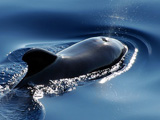 |
With the Pacific ocean on one side and the Caribbean Sea on the other, Panama has plenty of diving. For the big stuff - sharks, mantas, whales, etc - hit the Pacific. For gentler diving dip into the Caribbean.
|
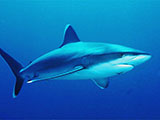 |
What you need to know about diving Mauritius Wrecks, caves, rays and sharks - but which parts of the Mauritius have the best dive sites?
|
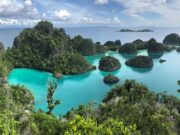 |
The 5 Best Biodiverse Destinations for Divers Pick of the top biodiverse dive destinations in the coral triangle
|
Conservation Adventure with the Sea of Change Foundation
Sharks, Coral & Conservation week in the Exuma Cays: measure sharks underwater with lasers.
Loggerheads are the most common turtle in the Mediterranean, but you also find them worldwide. They are named for their large heads AND are in fact one of the largest turtles - second only to the soft-shelled leatherback. Sadly they are endangered or threatened throughout their range. They have heart-shaped shells.

Photo credit: Matt Kieffer, (CC BY-SA 2.0)
When babies, Loggerheads are omnivores. As they age though, they stop eating seaweed and stick to animals like crabs, whelks and jellyfish. Their liking for jellyfish is now causing them problems, as to a turtle a plastic bag looks a lot like a jellyfish, and can even smell like one too. The smell can make the turtles seek out the plastic and they eat every sixth item of plastic that they encounter. This can leave them feeling full so they die of starvation. There is even a 22% chance of dying when eating just one item plastic.
 Photo credit: Brian Gratwicke (CC BY 2.0)
Photo credit: Brian Gratwicke (CC BY 2.0)
It's not just eating plastic which is a problem for the turtles. The accumulation of plastic debris on nesting beaches leads to baby turtles getting entangled so they can't reach the sea. Turtles also get caught up in abandoned fishing nets.
Like all turtles, adult females lay their eggs on beaches - usually on the same stretch of coastline at which they themselves were born. Some females lay as many as six clutches ranging over six miles during the breeding season. During their lifetime, a single female loggerhead will produce around 4,200 eggs and could scatter them at 40 different sites to increase the chance that some of their offspring will survive.
When the babies hatch, they scramble off the beach towards the sea. Hatchlings and juveniles spend the first 7 to 15 years of their lives in the open ocean. Then they migrate to nearshore coastal areas where they will forage and continue to grow for several more years. Adult female loggerhead turtles, at age 20 (USA) to 35 (Australia) years, migrate hundreds or thousands of kilometres from there to their nesting beaches. They find their way back to nesting beaches by looking for unique magnetic signatures along the coast. Turtles likely go to great lengths to find the places where they began life because successful nesting requires a combination of environmental features that are rare: the right temperature, few predators and an easily accessible steeply sloping beach.
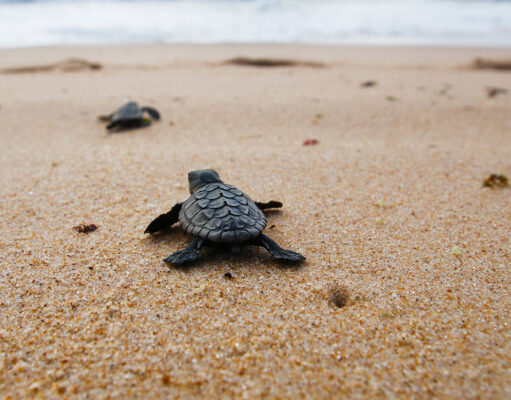
We all love to see a turtle on a dive. Luckily many more efforts are now being made around the world to protect them. We can all help be reducing our plastic use and taking part in beach and sea litter picking. But we need governments to do their bit as well.
Our round up of the best underwater news stories of the past month. For breaking news see our Twitter page or RSS feed
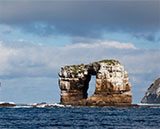 |
Galapagos Darwin's Arch collapses
|
 |
Sharks use Earth's magnetic fields to guide them like a map
|
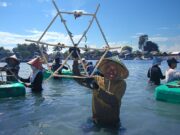 |
SHEBA unveils world's largest coral restoration program
|
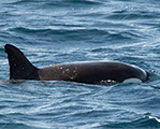 |
Orcas stripping long-line fishers of catch in the Southern Ocean
|
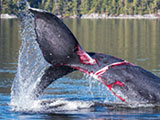 |
Suffering from entanglements is the norm for large whales
|
 |
Tiny self-propelling submarines could help clean up toxic waste
|
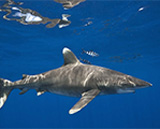 |
Vital Step to Protect Oceanic Whitetip Sharks
|
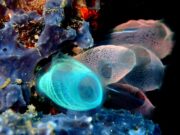 |
Sea Squirts help study microplastics in the ocean
|
SCUBA News is licensed under a Creative Commons Attribution 4.0 Unported License. This means we are happy for you to reuse our material for both commercial and non-commercial use as long as you: credit the name of the author, link back to the SCUBA Travel website and say if you have made any changes. Some of the photos though, might be copyright the photographer. If in doubt please get in touch.
Photo credits: Tim Nicholson, Jill Studholme, Kristin Riser, Jianye Sui
Previous editions of SCUBA News are archived at https://www.scubatravel.co.uk/news.html
SUBSCRIBING AND UNSUBSCRIBING
Visit [UNSUBSCRIBE] and add or remove your e-mail
address. To change whether your receive the newsletter
in text or HTML (with pictures) format visit [PREFERENCES]
ADVERTISING
Should you wish to advertise in SCUBA News, please
see the special offers at
https://www.scubatravel.co.uk/newsad.html
Other advertising opportunities are at
https://www.scubatravel.co.uk/advertising.html
CONTACTING THE EDITOR
Please send your letters or press releases to:
Jill Studholme
SCUBA News
The Cliff
DE6 2HR
UK
news@scubatravel.co.uk
PUBLISHER
SCUBA Travel, 5 Loxford Court, Hulme, Manchester, M15 6AF, UK
Our newsletter, SCUBA News (ISSN 1476-8011), is absolutely free. It is a monthly publication, delivered by e-mail. To receive your copy fill in your details below. We will never pass your e-mail address to any third parties, or send you unsolicited e-mail.
To receive your copy fill in your details below. We will never pass your e-mail address to any third parties, or send you unsolicited e-mail.
You will receive an e-mail confirming your subscription. If you don't receive this you may have entered your e-mail address incorrectly - revisit this page and re-subscribe.
We love hearing from you: send us any news, dive write ups, reviews or comments